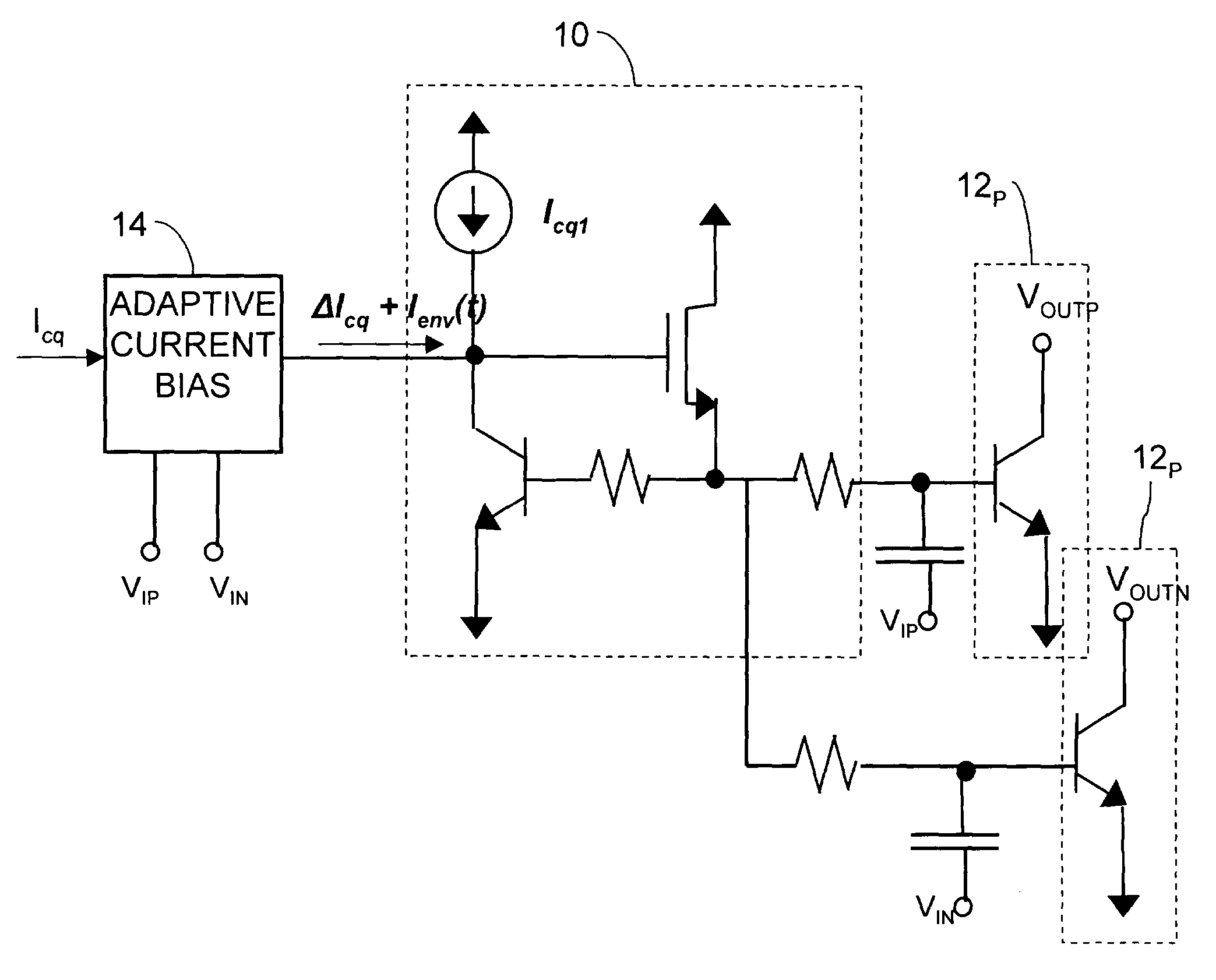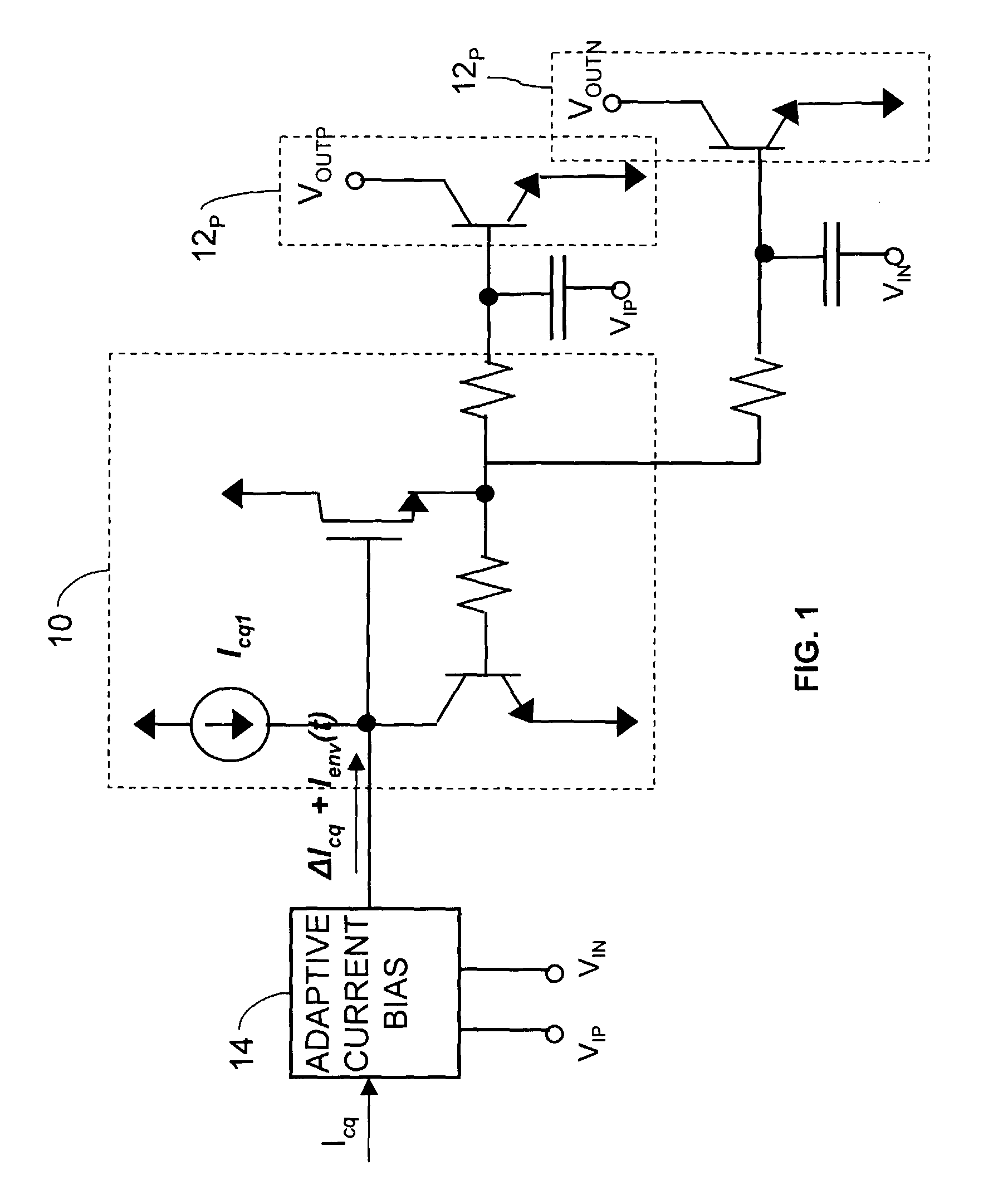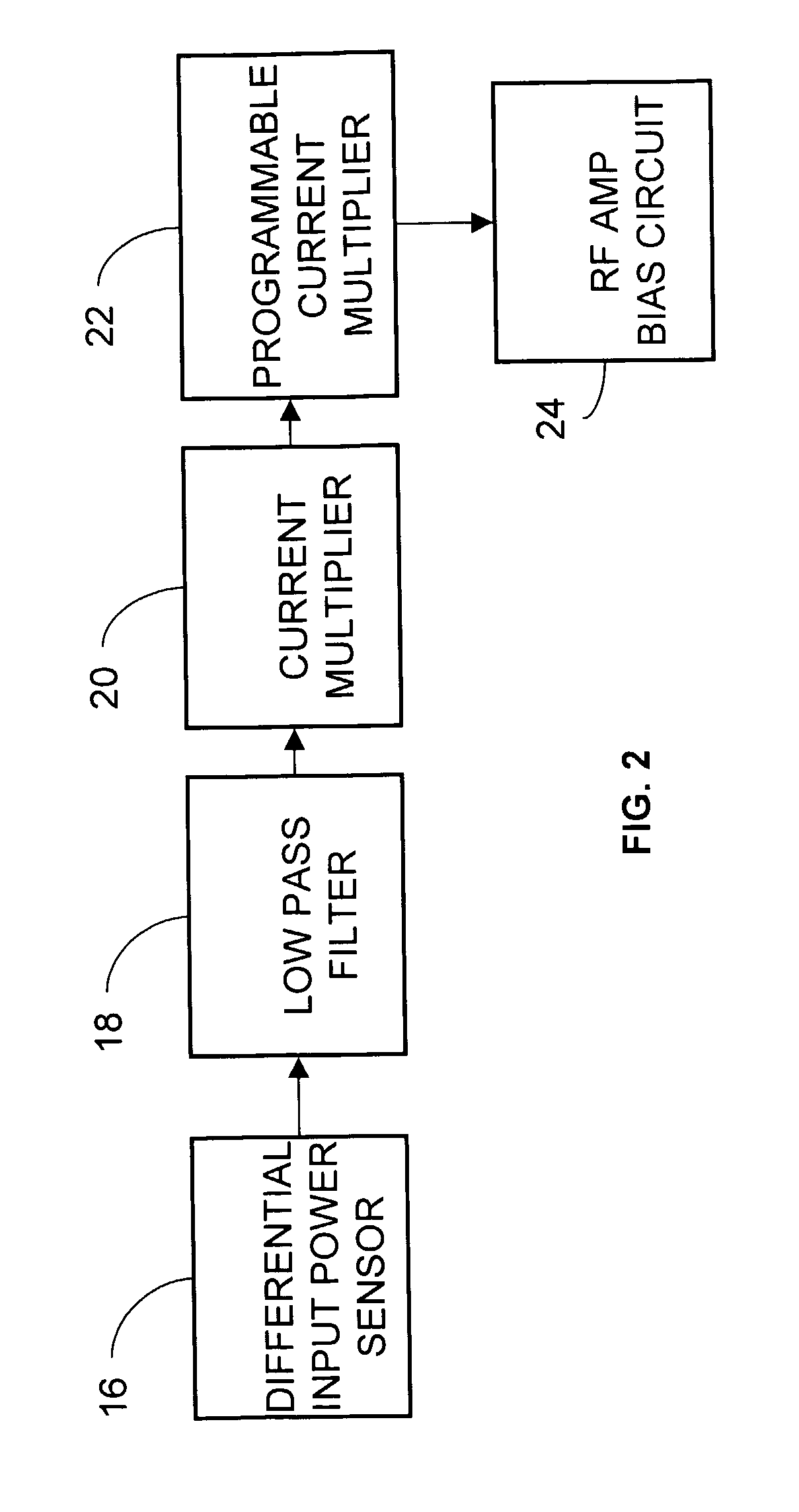Adaptive Bias Current Circuit and Method for Amplifiers
a bias current and amplifier technology, applied in the field of amplifiers, can solve the problems of stringent and challenging linearity requirements of radio frequency, amplifiers in rf circuits that consume considerable power, and achieve the effect of substantial current boos
- Summary
- Abstract
- Description
- Claims
- Application Information
AI Technical Summary
Benefits of technology
Problems solved by technology
Method used
Image
Examples
Embodiment Construction
[0015] Embodiments of the invention provide an input power based current boost to the bias circuit of an RF amplifier. In preferred embodiments of the invention, a differential transistor pair senses the input power difference of the positive and negative input voltages of an RF amplifier. As input power to the differential RF amplifier increases, the output current of the differential transistor pair clips, providing for high average current responsive to the level of input power. The differential transistors are biased with low quiescent current, so that their collector currents will be clipped during large-signal conditions, thus raising their average (dc) collector currents above the quiescent level. A low pass filter removes harmonics, and a current boost ΔI that is proportional to the input power is produced. This current boost is provided to the bias circuit of the RF amplifier. Preferably, one or more current mirrors, including a digitally programmable current mirror are pro...
PUM
 Login to View More
Login to View More Abstract
Description
Claims
Application Information
 Login to View More
Login to View More - R&D
- Intellectual Property
- Life Sciences
- Materials
- Tech Scout
- Unparalleled Data Quality
- Higher Quality Content
- 60% Fewer Hallucinations
Browse by: Latest US Patents, China's latest patents, Technical Efficacy Thesaurus, Application Domain, Technology Topic, Popular Technical Reports.
© 2025 PatSnap. All rights reserved.Legal|Privacy policy|Modern Slavery Act Transparency Statement|Sitemap|About US| Contact US: help@patsnap.com



